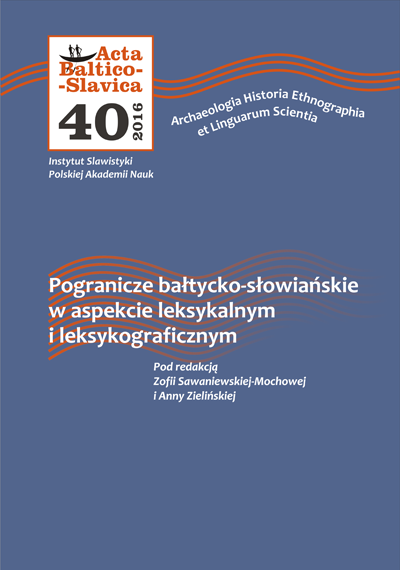Ludowe nazwy pochodzenia słowiańskiego tradycyjnych litewskich budynków i ich części
Folk terms of Slavic origin for traditional Lithuanian buildings and their parts
Author(s): Robertas StunžinasSubject(s): Cultural history, Customs / Folklore, Semantics, Baltic Languages, Social Informatics, Sociology of Culture
Published by: Instytut Slawistyki Polskiej Akademii Nauk
Keywords: Lithuanian folk terminology; terms of Slavic origin; names of buildings; synonymy; polysemy; metaphorical terms;
Summary/Abstract: The aim of this article is to give an overview of folk terms of Slavic origin naming houses and their parts and to identify semantic relations of terms – synonymy and polysemy. The article deals with more than 130 Slavisms, the material has been gathered from the main sources of spoken language and folk terminology – common dictionaries, dictionaries and atlases of dialects. Folk terminology of building is a broad, interesting and miscellaneous layer of folk terminology and is characterized by regional use, variety of expressions, figurativeness, abundance of synonyms and polysemy. Terms of Slavic origin amount to a significant part of Lithuanian folk terminology of building and make the largest group of borrowed terminology in this field. Terms of Slavic origin are used to denote almost all buildings of a traditional Lithuanian homestead. A significant part of traditional buildings and their parts have more than one name of Slavic origin. A few terms of Slavic origin can be identified as metaphoric and metaphorical transfer of the names according to emotional associations, external similarity or similarity of function is typical. Almost half of terms have more than one meaning. Polysemous terms name different constructions: building and room, part of building and room; less frequently they denote buildings or rooms of different purpose. Naming generic and specific concepts or denoting building and part of same building is not a prevalent type of polysemy of researched terminology.
Journal: Acta Baltico Slavica
- Issue Year: 2016
- Issue No: 40
- Page Range: 60-72
- Page Count: 13
- Language: English

